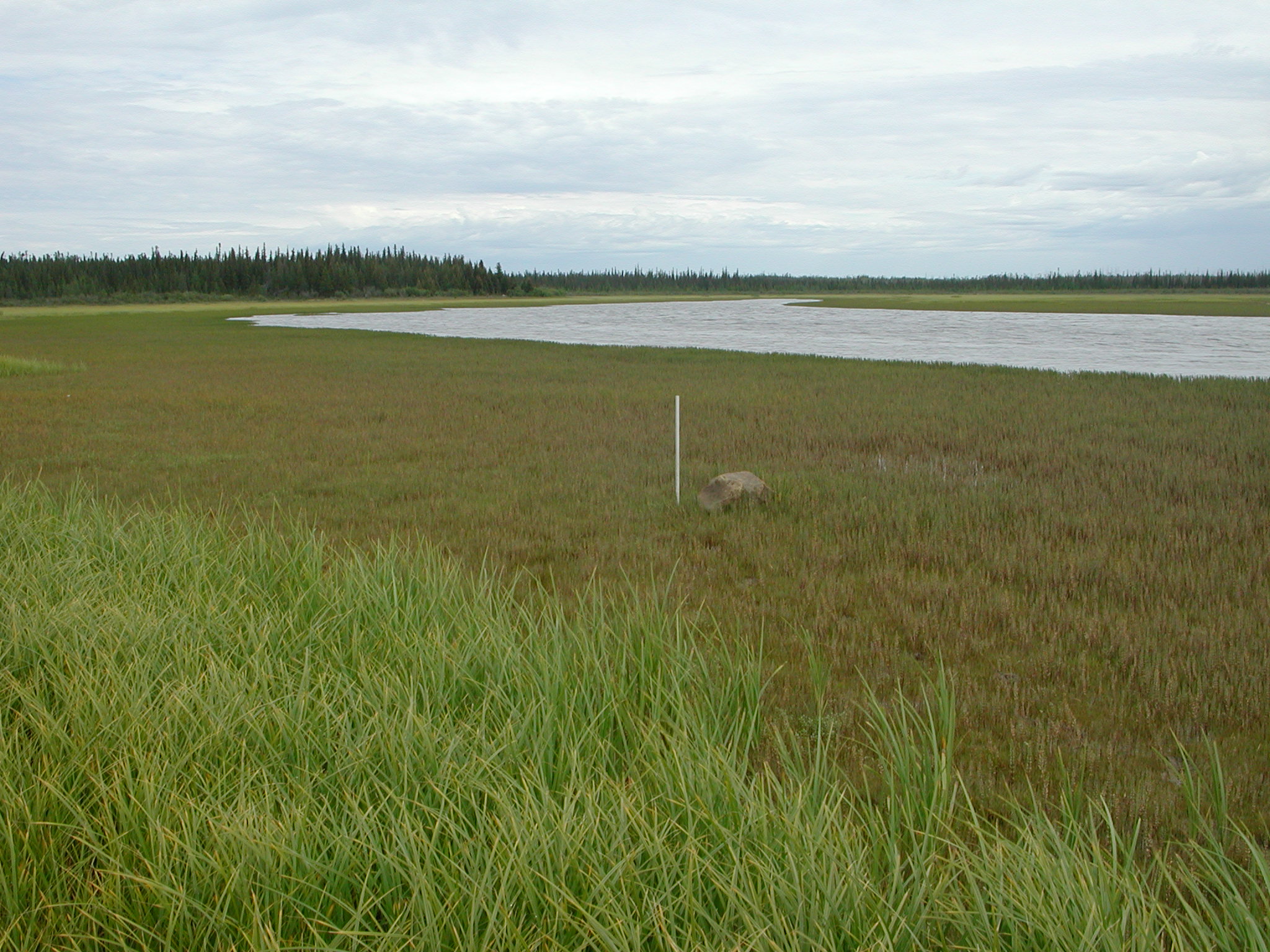|
Paleoecological reconstruction of coastal landscape change in James Bay, Canada
The reconstruction of
past ecosystems is based on the investigation of individuals and communities of
ancient organisms and their interactions with the changing environment.
After the death of the organisms traces of their existence remain
preserved in soils and sediments. These traces include pollen grains
from flowering plants, spores from non-vascular plants like mosses or
some vascular plants like ferns, horsetails and Lycopods, and fossilized body
parts (macrofossils) of plant and animals (e.g., insect
exoskeleton, leaves, seeds).
Some marine or
lacustrine single-cell plankton species form a cell wall (theca) resistant to
decay and these preserve as fossils. Together with pollen and spores they form
a category of micro-fossils known as PALYNOMORPHS.
Because it combines a
variety of different environmental indicators, palynomorph analysis is
one of the best tools to reconstruct former ecosystems.
In James
Bay the the shorelines are retreating due to isostatic
rebound and the former sea floor is becoming dry land. Up until 9, 000 years
ago, the region was covered by a huge ice sheet. The weight of the ice
depressed the land, but eventually the ice sheet disappeared due to a warming
climate. Since then the land began uplifting back to its original elevation.
This process is called isostatic rebound and it is still happening today.
Part of my research
in James Bay
tries to trace back the retreating shoreline and understand the landscape
change processes associated with shoreline retreat. One of the most vivid
processes of landscape change on these retreating coastlines is the
transformation of near-shore marine environments into inter-tidal ecosystems
such as tidal flats and salt marshes. With continuing rebound salt marshes are
replaced by fresh water ecosystems such as fens or bogs.
How fast are these
ecosystems changing? How fast did they change in the past? How does a slow
changing coastline look like as compared to a fast changing one? How does the
differential rate of landscape change affect resource availability and human
occupation? These are some of the questions I try to find answers to.
Salt marsh in James Bay
Dinoflagellate
cysts. Organic-walled thecae preserved in marine clays. They are good indicators
of sea surface temperature, salinity, sea ice cover, and nutrient
status.
Pollen types common in eastern James Bay salt marshes Ruppia maritima Carex spp. Potentilla spp. |